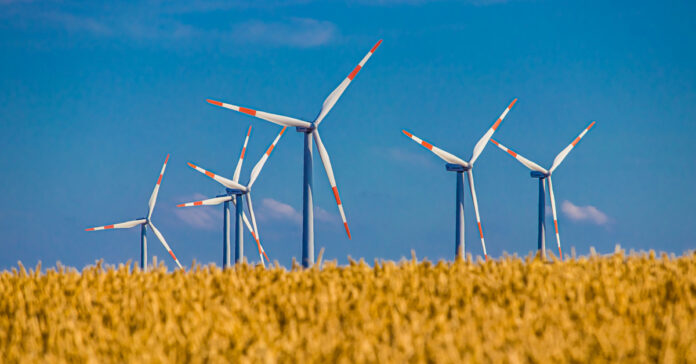
Yesterday, we discussed how a natural gas shortage in Europe is causing a shortage of fertilizer, which is in turn will harm the food supply in 2022. Fertilizer production is not only the intersection of the coming food crisis and energy crisis, but it demonstrate how problems in one area contribute to problems in others, thanks to the highly integrated and inter-related system we rely, known as the supply chain.
If harming fertilizer production was the only downstream effect of higher energy costs on the food supply, we could probably weather it with little notice, but fertilizer is just the start. A shortage of or higher costs for gasoline and diesel will also cause problems with planting and harvesting grains, transporting crops and animals, moving raw goods to processors and manufacturers, and distributing finished goods. Higher costs to heat greenhouses will either drive up food costs or cause growers to avoid planting in colder weather. That is bad news for the average citizen.
But the dangers of an energy crisis go well beyond its impact on food shortages. Fossil fuels and the electricity they generate enable our entire society and the Internet that links us. Without modern energy sources, we are catapulted back 100-plus years or more to using kerosene lamps, burning wood to heat our homes, and riding horses to get across town. Without energy and electronics, most of our society would crumble in a few short weeks. At least 90 percent of the population would die within the first year.
Manufacturing an Energy Crisis
Making matter worse, what we are seeing is not a natural energy crisis caused by using up a natural resource or by limited supplies. This is a manufactured crisis created by people pushing an agenda that is anti-fossil fuel. These people don’t care if you go hungry or freeze to death. Some of them look at it as an added cost of doing business, while others consider it an unexpected benefit of their plans.
How do you manufacture an energy crisis? By outlawing or regulating out of existence abundant sources of energy like coal, natural gas, and nuclear power. How do you get the populace to agree to outlaw them? By telling the easily swayed, poorly educated populace (thanks to the public schools we mentioned in Part One) that these “dirty” sources of energy are going to cause them to burn up as surely as if they had been sent to hell. In short: scaring them with tales or global warming and rising sea water so they support “green” energy.
Green Energy is Not Ready for Primetime
Getting energy from the sun and the wind sound great, but the sun only shines a portion of the day and not every day of the year. Likewise, the wind doesn’t blow continuously. Coal, on the other hand, always burns. Oil and natural gas produce a standard number of BTUs regardless if the time of day or the weather.
As England found out, it’s difficult to generate enough power when the wind dies down and you have decommissioned your coal-burning power plants. California learned the same lesson, but with solar power. Similarly, China has found out that stopping imports of coal from Australia for political reasons can lead to blackouts at home.
The global market will experience an energy shortage this winter not because there is no longer any gas, oil, or coal in the ground, but because governments have been scared into penalizing or prohibiting their use. Well-meaning politicians (to give them the benefit of the doubt, which some do not deserve) have been convinced that the way to cement their legacy as a leader is to eliminate the very thing that has propelled humanity from caveman to our lofty present status: Burning things and harnessing the resultant energy.
Energy Development Throughout History
Early societies relied on animal power, like horses, for transportation. This continued for so many millennia that we still measure the output of an engine in horsepower. As recently as 100 years ago, there were still farmers in the United States plowing with oxen, using mules and horses to help harvest and transport food to market. While the Amish may still do so, there are also less developed countries where animal power remains important.
Throughout history, humanity made progress as we harnessed more and more powerful energy sources.
Harnessing the power of burning wood and charcoal helped make the Bronze Age possible, followed by coal and the iron age. Harnessing the power of coal brought us advancements in metallurgy that allowed the production of pressure vessels for steam engines. This resulted in steam ships for moving goods and also made the railroads possible. Steam-powered horseless carriages were developed, but the idea only caught on when internal combustion engines were developed.
Only when we entered the oil age in the late 1800s did society make rapid progress as oil and gas were used for light and then in the internal combustion engine. Both also became important to the chemical industry, which in turn gave birth to the polymer industry. Whether you (or they) realize it or not, the government wants to ban the use of the very fuels that fueled the industrial revolution, which freed the populace from working on farms and allowed for an upwardly mobile society.
There is no Viable Alternative Energy Source
Windmills and waterwheels have ground grain and pumped water for a couple hundred years, well before the steam engine was developed or oil was discovered, but there is a reason we don’t live in a world dominated by wind power. It is not efficient enough. Sail boats were replaced by steam-powered boats and then coal, oil, and even nuclear-powered ships because they were more reliable, more powerful, and predictable. The best power sources rose to the top naturally due to free market principals, not because of political intervention. Forcing society to turn away from efficient, powerful sources of energy will make life tougher, not easier.
Today, the developed countries of the world consume huge amounts of power for the very things we rely on to keep us healthy and safe. Light, heat, transportation, communication, education, food production, manufacturing, producing polymers and chemicals, etc. The alternative energy source that will replace fossil fuels has not yet been commercialized. Rather than banning our existing sources or energy, the government should be seeking these next generation power sources. Providing plentiful and inexpensive energy from a new source will replace oil and coal as quickly and naturally as they replaced horses and oxen.
Oil and Gas are Also Raw materials
Solar power and wind power can never replace the use of natural gas and oil as precursors for producing common every-day polymers ranging from asphalt to water bottles and microwaveable trays to the body panels and dashboard of your automobile and the cases for your TVs and tablets. Finding an item in your home or offices that uses no plastics, adhesives, coatings or other chemicals derived from oil or gas is harder than finding something that isn’t made in China.
The politicians voting for these short-sighted programs don’t realize that. And the few that understand don’t care. These elites can afford energy no matter how bad the crisis grows.
Remember, they want to control food to control you. They want to curtail your access to energy to keep you immobile and to drain your bank accounts. We’ll talk about money, the third leg, in Part Four.






